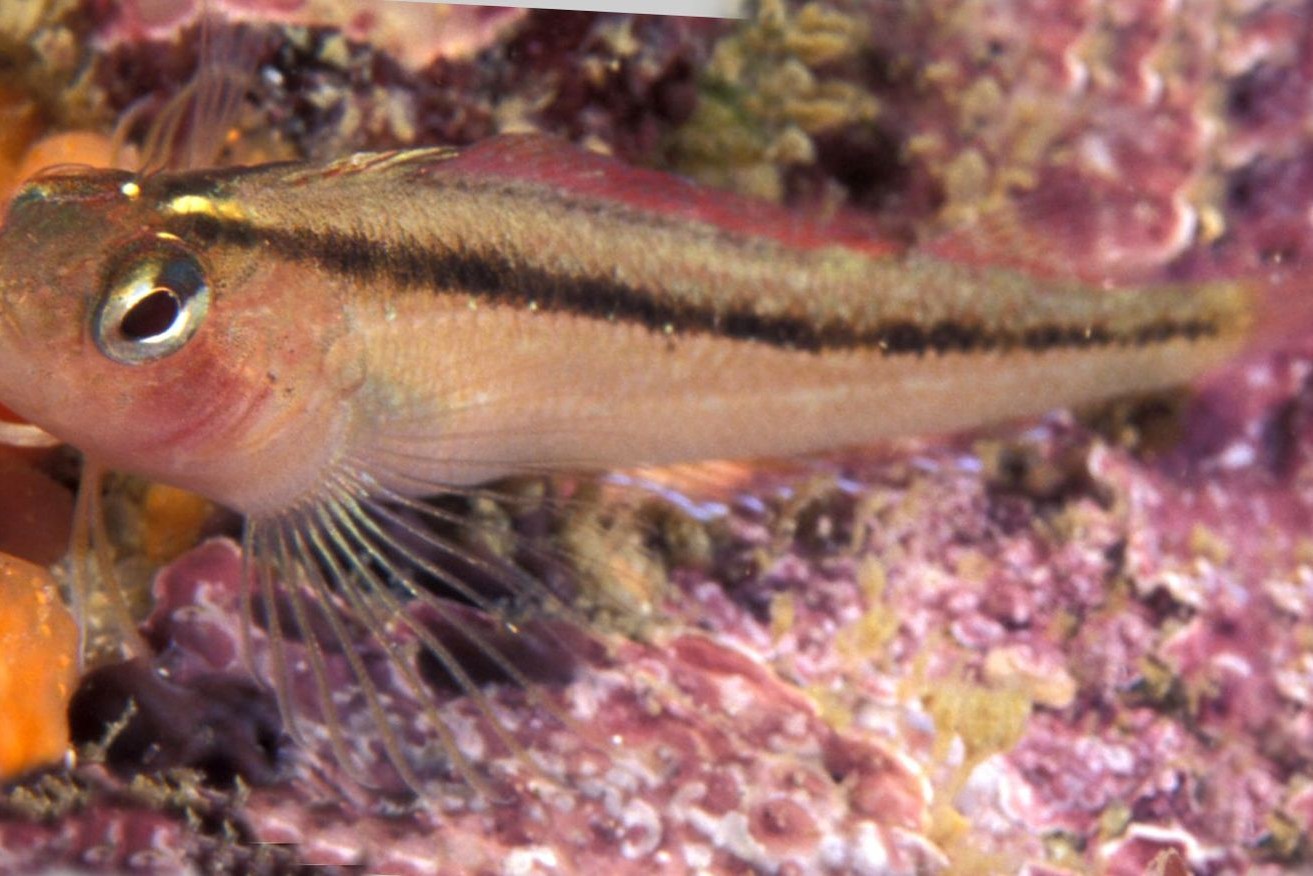Acidic oceans a positive for one fish, SA researchers find
The common triplefin fish may thrive in the more acidic oceans of the future, according to South Australian scientists.


A triplefin fish enjoying normal levels of CO2. Image: Ian Skipworth, Wikimedia Commons.
The University of Adelaide researchers said unlike the predicted negative effects anticipated for the world’s oceans as a result of increased CO2 levels, a study of triplefins showed the fish were able to capitalise on the changes to underwater ecosystems by producing more sperm and eggs.
University of Adelaide professor and lead author Ivan Nagelkelken said the fish increased their reproductive organs by about 25 per cent in the study, which was published in PLOS Biology.
“The warming oceans absorb about one-third of the additional CO2 being released into the atmosphere from carbon emissions, causing the oceans to acidify,” he said.
“We know that many species are negatively affected in their behaviour and physiology by ocean acidification.
“But we found that in this species of temperate fish – the common triplefin – both males and females had larger gonads under conditions of ocean acidification. This meant increased egg and sperm production and therefore more offspring.”
The researchers compared fish living in New Zealand’s underwater volcanic seeps, which have higher levels of CO2, with fish communities living in their usual habitat.
“Because we can’t predict accurately what the world is going to do in terms of mitigation of CO2 release and use of alternative energy resources… we used intermediate scenarios, taking into account some mitigation of current levels,” Nagelkelken said.
He said under an “intermediate level” of CO2 – which assumed various countries met their Paris Agreement targets and introduced climate change mitigation strategies – there were no negative effects for the triplefins.
“One particular triplefin does extremely well under CO2 so their populations are boosted because they have more food and they’re more aggressive so they dominate other triplefins,” he said.
“Normally in nature, if one species takes over, their predators would have more food available and would increase their predation on other species.
“Just as if you’ve got an explosion of rats and mice other species, such as birds of prey and snakes, would increase their population because there’s more food to keep the mice population down.
“But elevated CO2 also caused less kelp on rocky reefs and those kelp are usually the habitats that these predatory fish use to shelter in.
“As a result, the abundance of smaller predatory fish are lower in the elevated CO2 meaning triplefin do well and increase their population and they’re not eaten and can expand without any problem.”
He said while triplefin study had taken place in New Zealand waters, a species of the fish was also found in local waters.
“The system that we studied in New Zealand is very similar to the systems that we have here in Southern Australia, which means temperate rocky reefs, which are dominated by kelp and various types of algae,” Nagelkelken said.
“So by looking at one specific site we can infer how temperate rocky reefs are likely to respond around the world.
“Even though we don’t have the exact same species as in New Zealand it’s very likely species in South Australia will show a similar result.”




